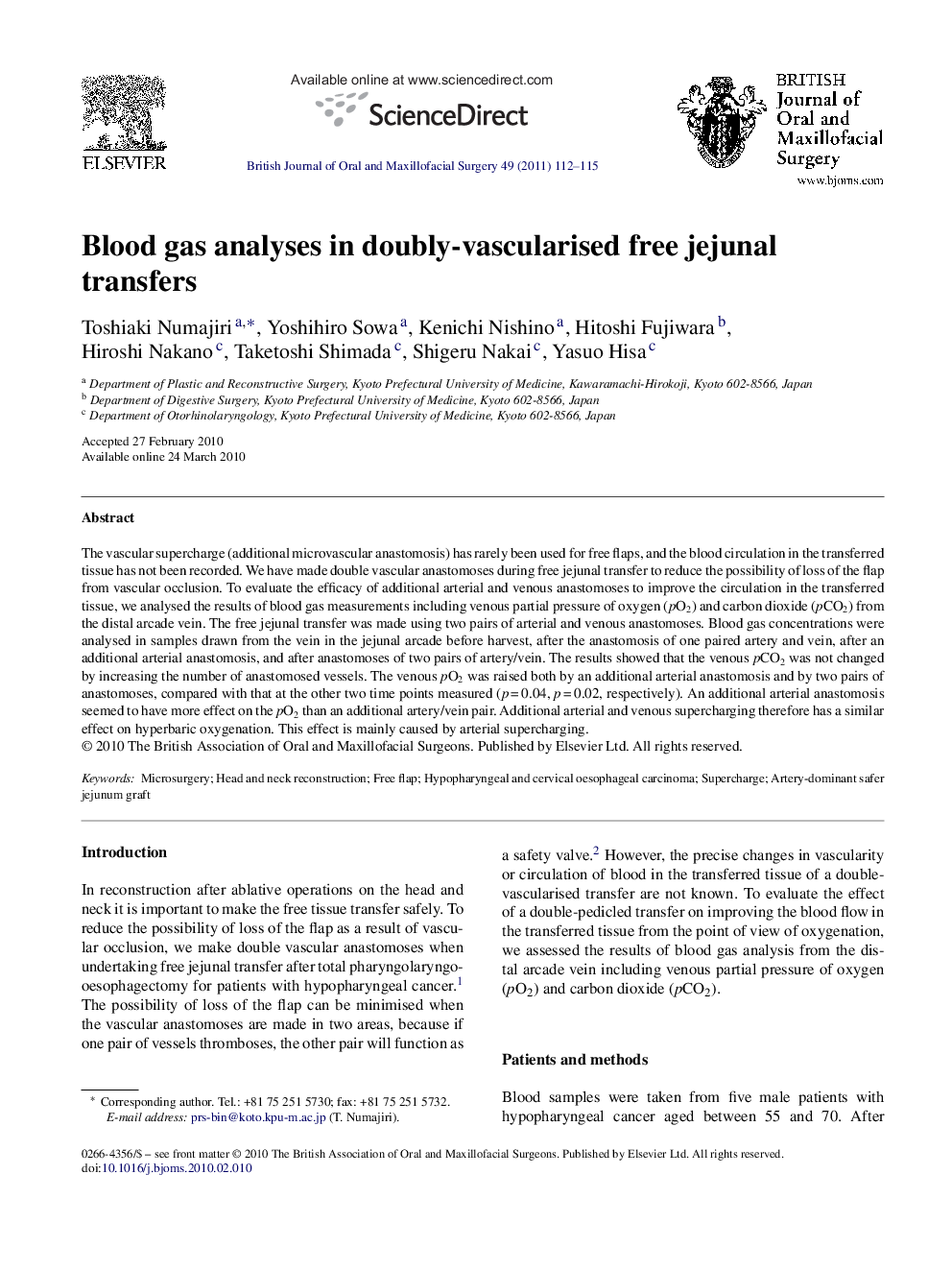| کد مقاله | کد نشریه | سال انتشار | مقاله انگلیسی | نسخه تمام متن |
|---|---|---|---|---|
| 3124488 | 1583750 | 2011 | 4 صفحه PDF | دانلود رایگان |

The vascular supercharge (additional microvascular anastomosis) has rarely been used for free flaps, and the blood circulation in the transferred tissue has not been recorded. We have made double vascular anastomoses during free jejunal transfer to reduce the possibility of loss of the flap from vascular occlusion. To evaluate the efficacy of additional arterial and venous anastomoses to improve the circulation in the transferred tissue, we analysed the results of blood gas measurements including venous partial pressure of oxygen (pO2) and carbon dioxide (pCO2) from the distal arcade vein. The free jejunal transfer was made using two pairs of arterial and venous anastomoses. Blood gas concentrations were analysed in samples drawn from the vein in the jejunal arcade before harvest, after the anastomosis of one paired artery and vein, after an additional arterial anastomosis, and after anastomoses of two pairs of artery/vein. The results showed that the venous pCO2 was not changed by increasing the number of anastomosed vessels. The venous pO2 was raised both by an additional arterial anastomosis and by two pairs of anastomoses, compared with that at the other two time points measured (p = 0.04, p = 0.02, respectively). An additional arterial anastomosis seemed to have more effect on the pO2 than an additional artery/vein pair. Additional arterial and venous supercharging therefore has a similar effect on hyperbaric oxygenation. This effect is mainly caused by arterial supercharging.
Journal: British Journal of Oral and Maxillofacial Surgery - Volume 49, Issue 2, March 2011, Pages 112–115